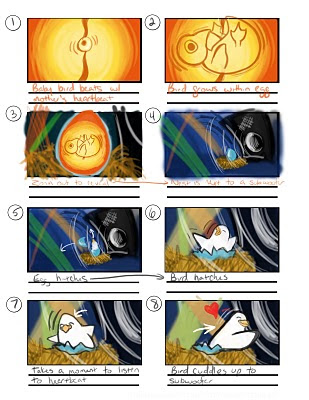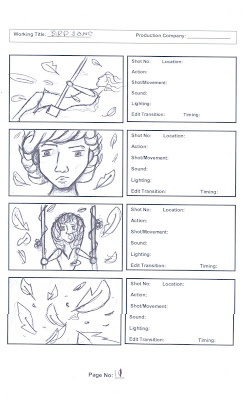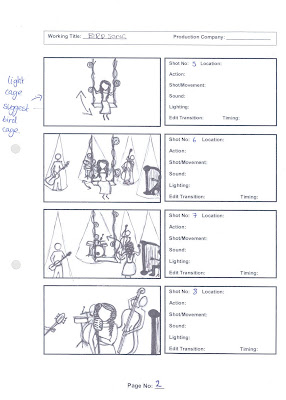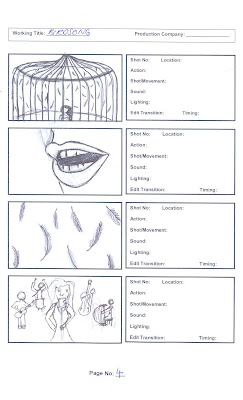The storyboard is the plan that you will use to. If it works on paper that makes it a lot less expensive than to waste time on shooting on camera for hours if not day
 s. The storyboards works out the type of shots that we will use, the camera angles, the camera movements, mise en scene, the colours and shapes, and how the picture composition rules will be applied in the film.
s. The storyboards works out the type of shots that we will use, the camera angles, the camera movements, mise en scene, the colours and shapes, and how the picture composition rules will be applied in the film.Our storyboarding really helped us to bring our music video together, it helped us to get a clear picture of what shots we needed where, the timing of them and it helped us to create strong visuals in our video. We were able to see the shots we wanted and work out the cuts that we wanted. We had to think about the angles and timings of each shot.
We have used lots of close ups in our storyboard in order to emphasise people and there instruments. As our song has some very slow bits and then some fast bits, we have used our storyboards to show the fast cutting bits from peoples faces to their instruments and we have decided to film bits of the song extremely fast to then be able to put it into slow motion in our editing yet still have her singing in time.
A tracking shot that we have storyboarded is a shot that begins with a close up of our lead singer’s mouth the camera then slowly tracks back to reveal her eyes and then the rest of her face. This camera movement helps the audience to feel involved and part of the shot, it gives them a sense of intimacy with the action that takes place.
We have used a lot of fast cutting shots in order to create action and excitement and to keep our audience intrigued throughout. We also have a ‘dance’ sequence which is based on a band called OKGO, this sequence will take a lot of editing as it will have a lot of slow-motion, fast cuts and movement. The band will jump from one are to the next using fast cutting.



 This is an image of a stroyboarder at work. Storyboarding takes time and percision. Artists have been storyboarding since the early 1930s and one of the first films to have been completly storyboarded was 'Gone With the Wind'. Storyboarding can become extreamly tediouse and takes a lot of time and effort. The image below on the right is an eight minuet animated cartoon strip. It has over 70 detailed images and probably took hours to draw and it is only worth 8 minuets of film.
This is an image of a stroyboarder at work. Storyboarding takes time and percision. Artists have been storyboarding since the early 1930s and one of the first films to have been completly storyboarded was 'Gone With the Wind'. Storyboarding can become extreamly tediouse and takes a lot of time and effort. The image below on the right is an eight minuet animated cartoon strip. It has over 70 detailed images and probably took hours to draw and it is only worth 8 minuets of film.
I looked at this seminar by Steven Spielberg on how to storyboard and we have learnt and been influenced greatly by it for our storyboard.
http://www.youtube.com/watch?v=nBH89Y0Xj7c&feature=related
No comments:
Post a Comment